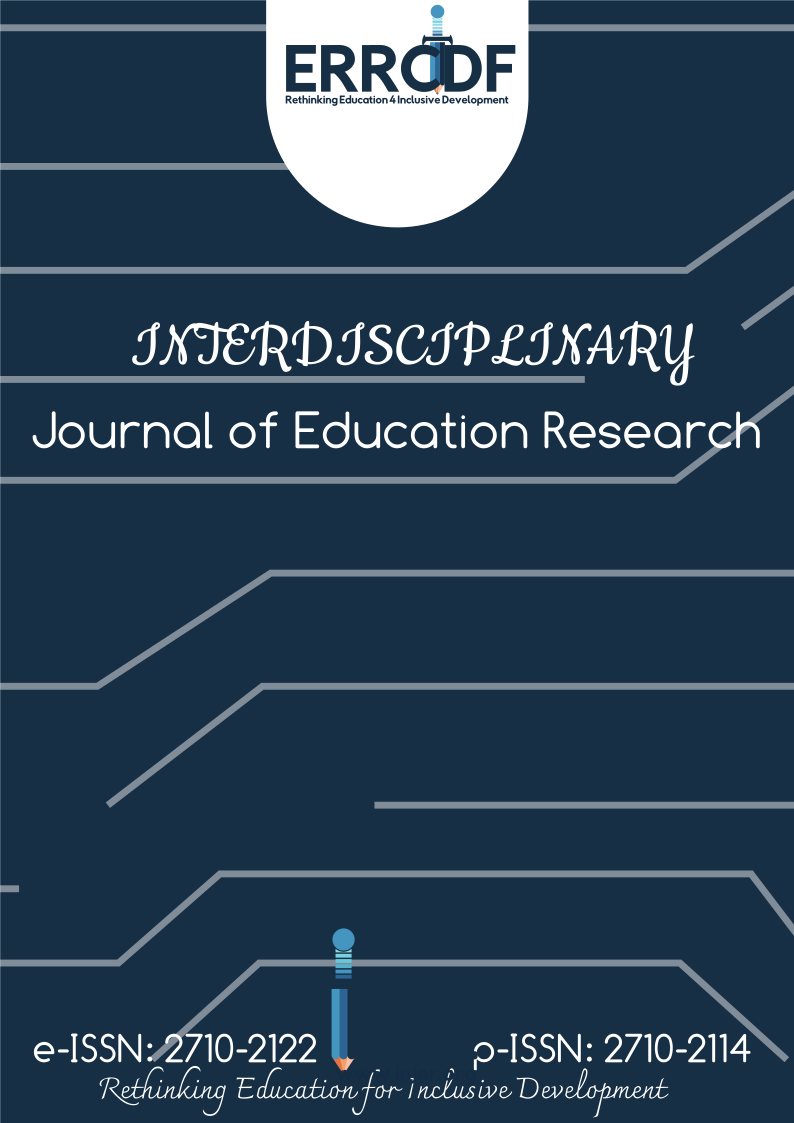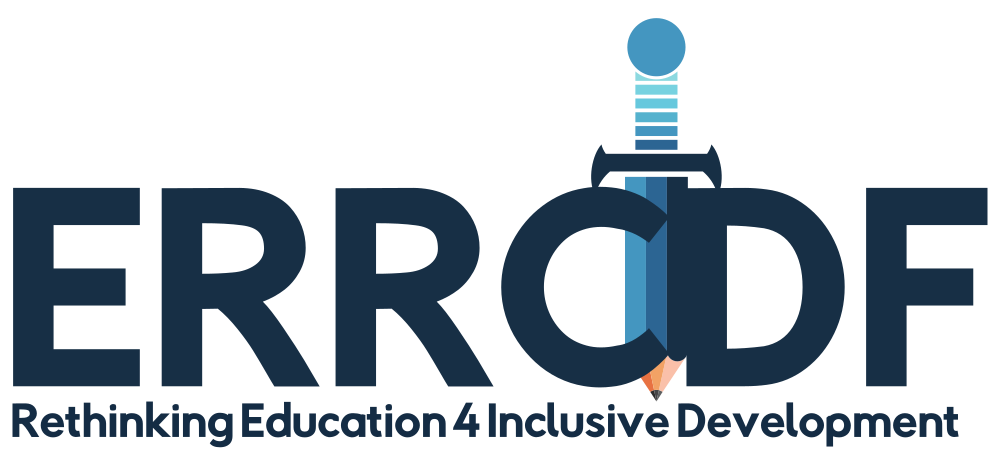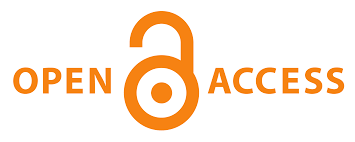Synchronising English second language proficiency and mathematical understanding through plurilingualism in correctional centre classrooms: Empirical perspectives
DOI:
https://doi.org/10.38140/ijer-2025.vol7.1.08Keywords:
Mathematics understanding, English L2 proficiency , plurilingualism , educationists, adult offendersAbstract
Several scholars have outlined the existence of a direct proportionality relationship between mathematics understanding and learners’ second language proficiency. Nonetheless, the role of plurilingualism in realising the synchronous development of mathematics understanding and second language proficiency within the context of adult correctional centre classrooms has received minimal scholarly attention, particularly given the expansion of multilingualism. This paper sought to probe into how the correlation between mathematics understanding and English second language proficiency is realised through plurilingual pedagogical strategies. In this research endeavour, we employed a pragmatic epistemological stance and framed the study within the QUANT-QUAL explanatory sequential mixed methods research design. We collected quantitative data through mathematics and L2 tests from 150 conveniently sampled adult offenders. We further collected qualitative data through semi-structured interviews from 5 purposively sampled educationists. We analysed data thematically and by SPSS data analysis tool, through Pearson Correlation. The study was underpinned by the Socio-Cultural Learning theoretical stance. Amongst our findings is that L2 proficiency correlates positively with adult offenders’ mathematics understanding. We further identified plurilingualism as the prominent pedagogical strategy through which the synchronisation between L2 and mathematics understanding is realised. Based on findings, we acclaimed the use of plurilingual strategies in the synchronisation of L2 proficiency and mathematics understanding in the context of multilingual adult offender education.
References
Adler, J. (1997). A participatory-inquiry approach and the mediation of mathematical knowledge in a multilingual classroom. Educational Studies in Mathematics, 33(3), 235–258. https://link.springer.com/article/10.1023/A:1002976114883
Adler, J. (1998). A language of teaching dilemmas: Unlocking the complex multilingual secondary mathematics classroom. For the Learning of Mathematics, 18(1), 24-33.
Adler, J. (1999). The dilemma of transparency: Seeing and seeing through talk in the mathematics classroom. Journal for Research in Mathematics Education, 30(1), 47-64. https://doi.org/10.2307/749629
Adler, J. (2000). Conceptualising resources as a theme for teacher education. Journal of Mathematics Teacher Education, 3(3), 205-224. https://doi.org/10.1023/A:1009903206236
Adler, J. (2001). Teaching Mathematics in Multilingual Classrooms (Vol. 26). Springer Science & Business Media. https://doi.org/10.1007/0-306-47229-5
Adler, J. (2021). Content and context specificity matter in the ‘how’ of language-responsive mathematics teacher professional development. In N. Planas, C. Morgan, & M. Schütte (Eds.), Classroom Research on Mathematics and Language (pp. 77-100). Routledge. https://doi.org/10.4324/9780429260889
Adler, J., Planas, N., Trouche, L., & Remillard, J. T. (2022). Mathematics teachers’ interactions with resources through a language lens. In C. Fernández, S. Llinares, A. Gutiérrez, & N. Planas (Eds.), Proceedings of the 45th Conference of the International Group for the Psychology of Mathematics Education (pp. 89-117). PME.
Agbata, B., Obeng-Denteh, W., Abraham, S., Asante-Mensa, F., Kwabi, P., Okpako, S., Amoah-Mensah, J., & Arivi, S. (2024). Advancing mathematics education in Africa: Challenges, strategies, and prospects. Science World Journal, 19(3), 808-818. https://doi.org/10.4314/swj.v19i3.28
Barwell, R. (2005a). Ambiguity in the mathematics classroom. Language and Education, 19(2), 117-125.
Barwell, R. (2005b). Integrating language and content: Issues from the mathematics classroom. Linguistics and Education, 16(2), 205-218. https://doi.org/10.1016/j.linged.2006.01.002
Barwell, R., Clarkson, P., Halai, A., Kazima, M., Moschkovich, J., Planas, N., Setati-Phakeng, M., Valero, P., & Villavicencio Ubillús, M. (2016). Mathematics education and language diversity: The 21st ICMI study. Springer Nature.
Canagarajah, S., & Liyanage, I. (2012). Lessons from pre-colonial multilingualism. In The Routledge Handbook of Multilingualism (pp. 67-83). Routledge. https://doi.org/10.4324/9780203154427
Corsi, E. D. (2019). A study of plurilingualism and pluriculturalism through the lived experiences of three young adults in multigenerational homes. University of Toronto http://hdl.handle.net/1807/95773
Cross, R., D'warte, J., & Slaughter, Y. (2022). Plurilingualism and language and literacy education. The Australian Journal of Language and Literacy, 45(3), 341-357. https://doi.org/10.1007/s44020-022-00023-1
Cutrim Schmid, E. (2023). Validating young learners’ plurilingual repertoires as legitimate linguistic and cultural resources in the EFL classroom. Applied Linguistics Review, 14(4), 945-966. https://doi.org/10.1515/applirev-2020-0117
Davis, B., & Sumara, D. (2005). Complexity science and educational action research: Toward a pragmatics of transformation. Educational Action Research, 13(3), 453-466.
de Abreu, G. (2020). Cultural Diversity in Mathematics Education. In: Lerman, S. (Eds) Encyclopedia of Mathematics Education. Springer, Cham. https://doi.org/10.1007/978-3-030-15789-0_37
Docrat, H. A. (2012). Exploring support strategies for assisting grade four English second language learners in developing cognitive academic language proficiency. University of Johannesburg.
Dooly, M., & Vallejo, C. (2020). Bringing plurilingualism into teaching practice: A quixotic quest? International Journal of Bilingual Education and Bilingualism, 23(1), 81-97. https://doi.org/10.1080/13670050.2019.1598933
Durkin, K., & Shire, B. (1991). Primary school children's interpretations of lexical ambiguity in mathematical descriptions. Journal of Research in Reading, 14(1), 46–55. https://doi.org/10.1111/j.1467-9817.1991.tb00005.x
Erath, K., Ingram, J., Moschkovich, J., & Prediger, S. (2021). Designing and enacting instruction that enhances language for mathematics learning: A review of the state of development and research. ZDM–Mathematics Education, 53, 245–262. https://doi.org/10.1007/s11858-020-01213-2
Eren, E.(2024). Plurilingualism in higher education in Türkiye. Language Education and Multilingualism – The Langscape Journal, 6, 90–103. https://doi.org/10.18452/28030
Essien, A. A. (2010). Investigating proficiency in the language of instruction as a means of improving mathematical proficiency in a multilingual classroom. Education as Change, 14(2), 169–185. https://doi.org/10.1080/16823206.2010.518006
Essien, A. A. (2023). Multilingualism in mathematics education in Africa. Bloomsbury Publishinghttp://digital.casalini.it/9781350369214
Farrington, D. P., MacLeod, J. F., & Piquero, A. R. (2016). Mathematical models of criminal careers: Deriving and testing quantitative predictions. Journal of Research in Crime and Delinquency, 53(3), 336–355. https://doi.org/10.1177/0022427815620237
Freeman, D. L., & Cameron, L. (2008). Research methodology on language development from a complex systems perspective. The Modern Language Journal, 92(2), 200–213. https://doi.org/10.1111/j.1540-4781.2008.00714.x
Galante, A., & Dela Cruz, J. W. N. (2024). The fall of bilingualism: Teacher candidates’ voices on the implementation of critical plurilingualism in English language teaching. International Multilingual Research Journal, 18(3), 254–273. https://doi.org/10.1080/19313152.2024.2326366
García, O. (2017). Translanguaging in schools: Subiendo y bajando, bajando y subiendo as afterword. Journal of Language, Identity & Education, 16(4), 256–263. https://doi.org/10.1080/15348458.2017.1329657
Ghasemi, A., & Zahediasl, S. (2012). Normality tests for statistical analysis: A guide for non-statisticians. International Journal of Endocrinology and Metabolism, 10(2), 486. https://doi.org/10.5812/ijem.3505
Grigorenko, E. L. (2006). Learning disabilities in juvenile offenders. Child and Adolescent Psychiatric Clinics, 15(2), 353–371. https://doi.org/10.1016/j.chc.2005.11.001
Halliday, M. A. K. (1975). Learning how to mean. In Foundations of language development (pp. 239–265). Elsevier. https://doi.org/10.1016/B978-0-12-443701-2.50025-1
Henry, D. L., Baltes, B., & Nistor, N. (2014). Examining the relationship between math scores and English language proficiency. Journal of Educational Research and Practice, 4(1), 2. https://doi.org/10.5590/JERAP.2014.04.1.02
Herbel-Eisenmann, B., Johnson, K. R., Otten, S., Cirillo, M., & Steele, M. D. (2015). Mapping talk about the mathematics register in a secondary mathematics teacher study group. The Journal of Mathematical Behavior, 40, 29-42. https://doi.org/10.1016/j.jmathb.2014.09.003
Hinton, P. R., McMurray, I., & Brownlow, C. (2014). SPSS explained. Routledge. https://doi.org/10.4324/9781315797298
Horn, I., & Garner, B. (2022). Teacher learning of ambitious and equitable mathematics instruction: A sociocultural approach. Routledge. https://doi.org/10.4324/9781003182214
Kaveh, Y. M. (2023). Re-orienting to language users: Humanizing orientations in language planning as praxis. Language Policy, 22(1), 1-23. https://doi.org/10.1007/s10993-022-09645-0
Khisty, L. L., & Chval, K. B. (2002). Pedagogic discourse and equity in mathematics: When teachers’ talk matters. Mathematics Education Research Journal, 14(3), 154-168. https://doi.org/10.1007/BF03217360
Khohliso, X., & Mbatha, S. (2025). Umphumela wokufundiswa koLimi lokuQala loKwengeza kubafundi abasincele ebeleni isiZulu. South African Journal of African Languages, 1-12. https://doi.org/10.1080/02572117.2024.2379289
Krause, G., Adams Corral, M., & Maldonado Rodríguez, L. A. (2022). Developing awareness around language practices in the elementary bilingual mathematics classroom. Journal of Urban Mathematics Education, 15(2), 8–40. https://doi.org/10.21423/jume-v15i2a462
Lane, C., O'Meara, N., & Walsh, R. (2019). Pre-service mathematics teachers' use of the mathematics register. Issues in Educational Research, 29(3), 790-806.
Laviosa, S. (2014). Translation and language education: Pedagogic approaches explored. Routledge. https://doi.org/10.4324/9781315764542
Mainali, B. (2021). Representation in teaching and learning mathematics. International Journal of Education in Mathematics, Science and Technology, 9(1), 1-21. https://doi.org/10.46328/ijemst.1111
Malaki, M., Aminifar, E., Mesgarani, H., & Alipour, M. (2022). Learning opportunities in mathematics: The role of first language in bilingual settings. SN Social Sciences, 2(1), 7. https://doi.org/10.1007/s43545-021-00304-5
Mbatha, S. (2024a). Evaluating educationists’ andragogical strategies for teaching numeracy: A case study of the KwaZulu-Natal Adult Correctional Centre classroom. E-Journal of Humanities, Arts and Social Sciences, 5(8), 1596-1610. https://doi.org/10.38159/ehass.20245813
Mbatha, S. (2024b). The role of translanguaging in teaching mathematics at adult correctional centre classrooms in South Africa. E-Journal of Humanities, Arts and Social Sciences, 5(6),825-834. https://doi.org/10.38159/ehass.2024563
Mbatha, S., Mngomezulu, H., Nduku, N., & Mbathu, O. (2024). The role of mathematics and science education in the adult offender rehabilitation process. E-Journal of Humanities, Arts and Social Sciences, 5(14), 2464–2479. https://doi.org/10.38159/ehass.20245142
Mbatha, S., & Mokoena, M. (2024). Fostering decolonization, reading, and multilingualism through book donation: A case study of one primary school in South Africa. E-Journal of Humanities, Arts and Social Sciences, 6(1), 798-813.https://doi.org/10.38159/ehass.2024561
McLachlan, K., & Essien, A. A. (2022). Language and multilingualism in the teaching and learning of mathematics in South Africa: A review of literature in Pythagoras from 1994 to 2021. Pythagoras, 43(1), 1-11. https://doi.org/10.4102/pythagoras.v43i1.669
Moore, D., & Gajo, L. (2009). Introduction–French voices on plurilingualism and pluriculturalism: Theory, significance and perspectives. International Journal of Multilingualism, 6(2), 137-153. https://doi.org/10.1080/14790710902846707
Moschkovich, J. (1999). Supporting the participation of English language learners in mathematical discussions. For the learning of mathematics, 19(1), 11-19.https://www.jstor.org/stable/40248284
Moschkovich, J. (2009). How language and graphs support conversation in a bilingual mathematics classroom. Multilingualism in mathematics classrooms: Global perspectives, 78-96. https://doi.org/10.21832/9781847692061-008
Moschkovich, J. N. (2008). “I went by twos, he went by one”: Multiple interpretations of inscriptions as resources for mathematical discussions. The Journal of the Learning Sciences, 17(4), 551-587.https://doi.org/10.1080/10508400802395077
Moschkovich, J. N. (2015). Academic literacy in mathematics for English learners. The Journal of Mathematical Behavior, 40, 43-62. https://doi.org/10.1016/j.jmathb.2015.01.005
Mwadzaangati, L., & Adler, J. (2023). Malawian secondary mathematics teachers’ take-up of language responsive teaching through lesson study. Thirteenth Congress of the European Society for Research in Mathematics Education (CERME13). https://hal.science/hal-04406745v1
Nagy, W., & Townsend, D. (2012). Words as tools: Learning academic vocabulary as language acquisition. Reading Research Quarterly, 47(1), 91-108. https://doi.org/10.1002/RRQ.011
Pallant, J. (2020). SPSS survival manual: A step by step guide to data analysis using IBM SPSS. Routledge. https://doi.org/10.4324/9781003117452
Park, J., & Kim, P. (2021). Mathematical analysis of crime dynamics in and out of prisons. Mathematical Methods in the Applied Sciences, 44(1), 650-667.https://doi.org/10.1002/mma.6771
Perlovsky, L. (2009). Language and cognition. Neural Networks, 22(3), 247-257. https://doi.org/10.1016/j.neunet.2009.03.007
Phakeng, M. (2018). One country, many languages: Exploring a multilingual approach to mathematics teaching and learning in South Africa. In Proceedings of the IV ERME Topic Conference ‘Classroom-based research on mathematics and language’ (pp. 8-16). Dresden, Germany.
Piccardo, E. (2013). Plurilingualism and curriculum design: Toward a synergic vision. TESOL Quarterly, 47(3), 600-614. https://doi.org/10.1002/tesq.110
Piccardo, E., & Aden, J. (2014). Plurilingualism and empathy: Beyond instrumental language learning. In E. Piccardo & J. Aden (Eds.), The multilingual turn in language education: Opportunities and challenges (pp. 240-263). Multilingual Matters. https://doi.org/10.21832/9781783092246-017
Planas, N. (2011). Language identities in students’ writings about group work in their mathematics classroom. Language and Education, 25(2), 129-146. https://doi.org/10.1080/09500782.2011.552725
Planas, N., & Alfonso, J. M. (2023). Secondary-school teachers’ noticing of aspects of mathematics teaching talk in the context of one-day workshops. The Journal of Mathematical Behavior, 71, 101084. https://doi.org/10.1016/j.jmathb.2023.101084
Planas, N., & Civil, M. (2013). Language-as-resource and language-as-political: Tensions in the bilingual mathematics classroom. Mathematics Education Research Journal, 25, 361-378. https://doi.org/10.1007/s13394-013-0075-6
Planas, N., & Setati-Phakeng, M. (2014a). On the process of gaining language as a resource in mathematics education. ZDM, 46(6), 883-893. https://doi.org/10.1007/s11858-014-0610-2
Planas, N., & Setati, M. (2009). Bilingual students using their languages in the learning of mathematics. Mathematics Education Research Journal, 21(3), 36-59. https://doi.org/10.1007/BF03217552
Prediger, S., & Uribe, Á. (2021). Exploiting the epistemic role of multilingual resources in superdiverse mathematics classrooms: Design principles and insights into students’ learning processes. In Diversity dimensions in mathematics and language learning: Perspectives on culture, education and multilingualism (pp. 80-97). https://doi.org/10.1515/9783110661941
Prediger, S., & Wessel, L. (2013). Fostering German-language learners’ constructions of meanings for fractions—Design and effects of a language-and mathematics-integrated intervention. Mathematics Education Research Journal, 25(3), 435-456. https://doi.org/10.1007/s13394-013-0079-2
Romera-Paredes, B., Barekatain, M., Novikov, A., Balog, M., Kumar, M. P., Dupont, E., Ruiz, F. J., Ellenberg, J. S., Wang, P., & Fawzi, O. (2024). Mathematical discoveries from program search with large language models. Nature, 625(7995), 468-475. https://doi.org/10.1038/s41586-023-06924-6
Rosa, J., & Flores, N. (2021). Decolonization, language, and race in applied linguistics and social justice. Applied Linguistics, 42(6), 1162-1167. https://doi.org/10.1093/applin/amab062
Rozgonjuk, D., Kraav, T., Mikkor, K., Orav-Puurand, K., & Täht, K. (2020). Mathematics anxiety among STEM and social sciences students: The roles of mathematics self-efficacy, and deep and surface approach to learning. International Journal of STEM Education, 7, 1-11.https://doi.org/10.1186/s40594-020-00246-z
Ruiz, R. (1984). Orientations in language planning. NABE Journal, 8(2), 15-34. https://doi.org/10.1080/08855072.1984.10668464
Scherzinger, L., & Brahm, T. (2023). A systematic review of bilingual education teachers’ competences. Educational Research Review, 39, 100531. https://doi.org/10.1016/j.edurev.2023.100531
Schleppegrell, M. J. (2007). The linguistic challenges of mathematics teaching and learning: A research review. Reading & Writing Quarterly, 23(2), 139-159. https://doi.org/10.1080/10573560601158461
Schober, P., Boer, C., & Schwarte, L. A. (2018). Correlation coefficients: Appropriate use and interpretation. Anesthesia & Analgesia, 126(5), 1763-1768. https://doi.org/10.1213/ANE.0000000000002864
Setati, M. (2005). Teaching mathematics in a primary multilingual classroom. Journal for Research in Mathematics Education, 36(5), 447-466. https://doi.org/10.2307/30034945
Setati, M., Adler, J., Reed, Y., & Bapoo, A. (2002). Incomplete journeys: Code-switching and other language practices in mathematics, science and English language classrooms in South Africa. Language and Education, 16(2), 128-149. https://doi.org/10.1080/09500780208666824
Sharma, S., & Sharma, S. (2023). Successful teaching practices for English language learners in multilingual mathematics classrooms: A meta-analysis. Mathematics Education Research Journal, 35(4), 821-848. https://doi.org/10.1007/s13394-022-00414-0
Spolsky, B. (1974). Speech communities and schools. TESOL Quarterly, 17-26. https://doi.org/10.2307/3585656
Stovner, R. B., & Klette, K. (2022). Teacher feedback on procedural skills, conceptual understanding, and mathematical practices: A video study in lower secondary mathematics classrooms. Teaching and Teacher Education, 110, 103593. https://doi.org/10.1016/j.tate.2021.103593
Straehler-Pohl, H., Fernández, S., Gellert, U., & Figueiras, L. (2014). School mathematics registers in a context of low academic expectations. Educational Studies in Mathematics, 85, 175-199. https://doi.org/10.1007/s10649-013-9503-5
Thara, S., & Poornachandran, P. (2018). Code-mixing: A brief survey. In 2018 International Conference on Advances in Computing, Communications and Informatics (pp. 1-7). IEEE. https://doi.org/10.1109/ICACCI.2018.8554413
Trenchs-Parera, M., & Pastena, A. (2024). Exploring transcultural competence in the internationalised university classroom: The role of intercultural friendships and plurilingualism in the construction of a transcultural identity. Journal of Multilingual and Multicultural Development, 45(2), 209-223. https://doi.org/10.1080/01434632.2021.1874391
Ulusoy, F. (2021). Prospective early childhood and elementary school mathematics teachers’ concept images and concept definitions of triangles. International Journal of Science and Mathematics Education, 19(5), 1057-1078. https://doi.org/10.1007/s10763-020-10105-6
Uptegrove, E. B. (2015). Shared communication in building mathematical ideas: A longitudinal study. The Journal of Mathematical Behavior, 40, 106-130. https://doi.org/10.1016/j.jmathb.2015.02.001
Verma, A. (1997). Construction of offender profiles using fuzzy logic. Policing: An International Journal of Police Strategies & Management, 20(2), 408–418. https://doi.org/10.1108/13639519710169216
Verspoor, M. H., Lowie, W., & Bot, K. (2011). A dynamic approach to second language development. A Dynamic Approach to Second Language Development, 1-221. https://doi.org/10.2307/41478817
Voyer, A. S. (2020). Translating socio-cultural plurilingualism: Articulating affect. Université d'Ottawa/University of Ottawa. https://doi.org/10.20381/ruor-24436
Vygotsky, L. S. (1978). Interaction between learning and development. In V. Gauvain & M. Cole (Eds.), Mind in society (pp. 79–91). Harvard University Press.
Ward-Penny, R., & Thomas, J. (2024). Building a resilient mathematical learning environment. In The Mathematical Resilience Book (pp. 61-74). Routledge. https://doi.org/10.4324/9781003334354
Wilkinson, L. C. (2018). Teaching the language of mathematics: What the research tells us teachers need to know and do. The Journal of Mathematical Behavior, 51, 167-174. https://doi.org/10.1016/j.jmathb.2018.05.001
Xu, C., Lafay, A., Douglas, H., Di Lonardo Burr, S., LeFevre, J. A., Osana, H. P., Skwarchuk, S.-L., Wylie, J., Simms, V., & Maloney, E. A. (2022). The role of mathematical language skills in arithmetic fluency and word-problem solving for first- and second-language learners. Journal of Educational Psychology, 114(3), 513. https://doi.org/10.1037/edu0000673
Zhou, H. (2016). Physical education senior high school entrance exam SPSS analysis from the perspective of school-student-parents. Journal of Computational and Theoretical Nanoscience, 13(12), 10039–10043. https://doi.org/10.1166/jctn.2016.6206
Downloads
Published
How to Cite
Issue
Section
License
Copyright (c) 2025 Siphelele Mbatha, Xolani Khohliso, Sboniso Zondi, Nompumelelo Nzimande

This work is licensed under a Creative Commons Attribution 4.0 International License.










